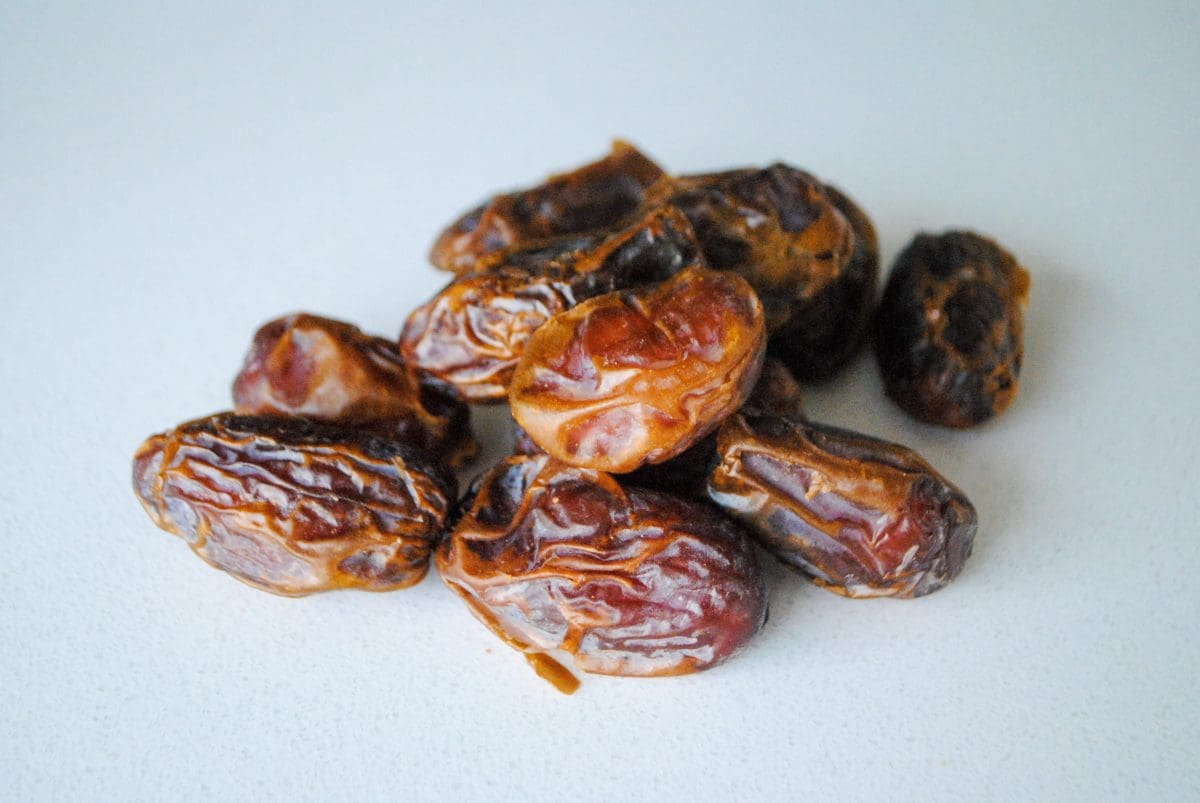Tasty Tidbits about Dates.

I am so excited to announce a new contributor to the Drizzle Kitchen blog! Lauren Woodbridge has a degree in Nutrition and is passionate about happy food alchemy just like all of us here! She will be adding to our collection of recipes and food history in the new section titled “Tasty Tidbits.” Welcome, Lauren!
xo, Kendra
I never realized how interesting this sweet little treat could be! Dates have quite the fruitful past.
For over 6,000 years, dates have been present at almost every dinner table and occasion in the Middle East. They are most commonly consumed in a rich, buttery cookie called ma’amoul every evening of Ramadan or at the final feast known as Eid al-Fitr. They thrive in extremely hot, dry conditions and are a great source of numerous minerals. Growing such a shelf-stable and nutritious food product that could survive in this atmosphere was crucial for their culture and wellbeing.
After date fruit was brought to the United States in the early 1900’s, an agricultural explorer by the name of Walter Swingle, studied the tree very closely in Algeria. During this time, he found intriguing connections between the weather conditions of the Sahara desert and the Coachella Valley of California. This meant wonderful new things for agriculture of this area. This happened to be a time when the Southern California community was falling wildly in love with the Orient culture – hooked on a silent film, The Sheik by Rudolph Valentino and a book, One Thousand and One Arabian Nights. They were naming streets Baghdad and Cairo, towns Mecca, Thermal and Oasis and placing pyramids and camels all over the city. Adding dates to their diet seemed quite fitting!
You may be most familiar with Medjool dates. This variety is a deep amber-brown color, slightly wrinkled and tastes of caramel and honey. In addition to Medjool, there are about 12 varieties grown here in the United States along the Coachella Valley into Southwestern Arizona. Today, dates are labeled as “nature’s power fruit” and marketed towards the health-conscious consumers with U.S. sales close to 33,000 tons per year.
Have you ever wondered why Medjool dates can be so expensive? Due to their soft and plump shape, they are primarily hand-picked individually from the tree. The extensive health benefits offered also make them well worth the cost! This fruit contributes a great balance of carbohydrates, potassium, magnesium and antioxidants for a nearly perfect workout snack. Dates are rich in both soluble and insoluble fiber, vitamin B6 for brain health and iron for healthy red blood cells.
As if their health profile wasn’t enough, they are also extremely versatile. Let’s say you have decided to cut back on processed sugar, but have a hard time letting go of the sweet flavor. Dates could be your answer! They can be used to thicken and sweeten nutrition bars, power balls, smoothies and desserts. You can stuff them with cheese or nuts, wrap them in bacon, chop them on salads, turn them into healthy syrup, stew them with chicken or beef, the options are endless!
Drizzle Kitchen’s recipe for Banana-Matcha Smoothies shows you one of Chef Kendra’s favorite ways to sweeten up a delicious smoothie and add some great nutrition to it!
Resources
“Dates: The Sticky History of a Sweet Fruit.” The Plate, 18 June 2015, www.theplate.nationalgeographic.com/2015/06/18/dates-the-sticky-history-of-a-sweet-fruit/
Nandy, Priyadarshini. “10 Dates Benefits: From Improving Bone Health to Promoting Beautiful Skin.” NDTV Food, 1 Feb. 2018, https://food.ndtv.com/food-drinks/10-dates-benefits-from-improving-bone-health-to-promoting-beautiful-skin-1258714
Naseem, Saba. “Five Ways to Eat Dates.” Smithsonian.com, Smithsonian Institution, 1 July 2014, www.smithsonianmag.com/arts-culture/five-ways-eat-dates-180951928/
Russo, Susan. “Medjool: A Date to Remember.” NPR, NPR, 17 Oct. 2007, www.npr.org/templates/story/story.php?storyId=15282847

